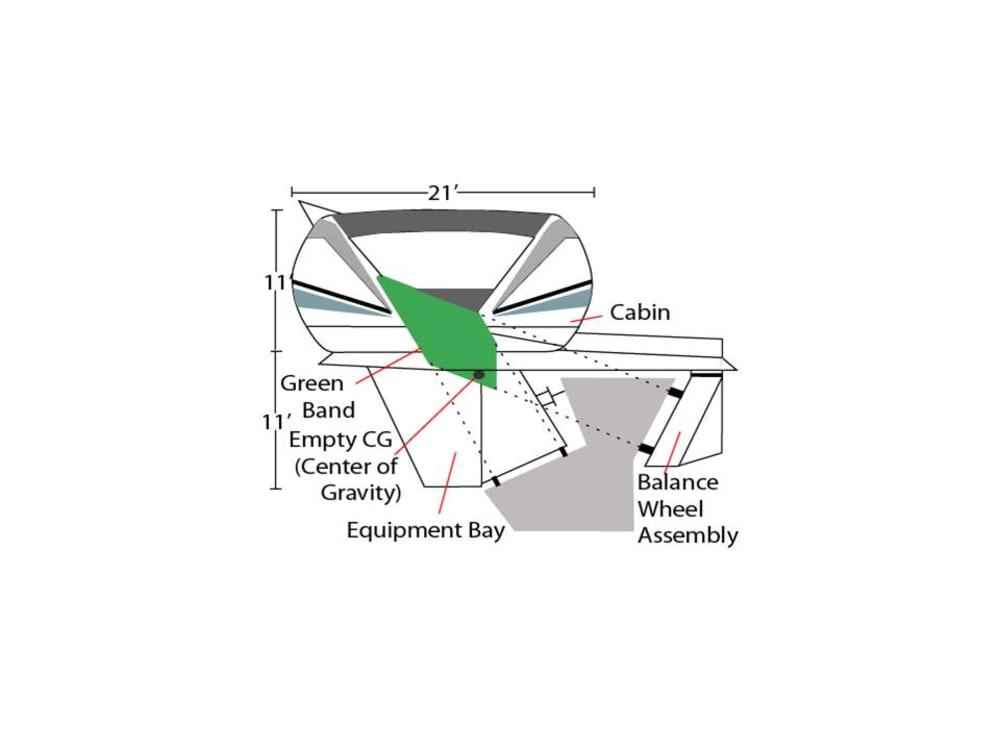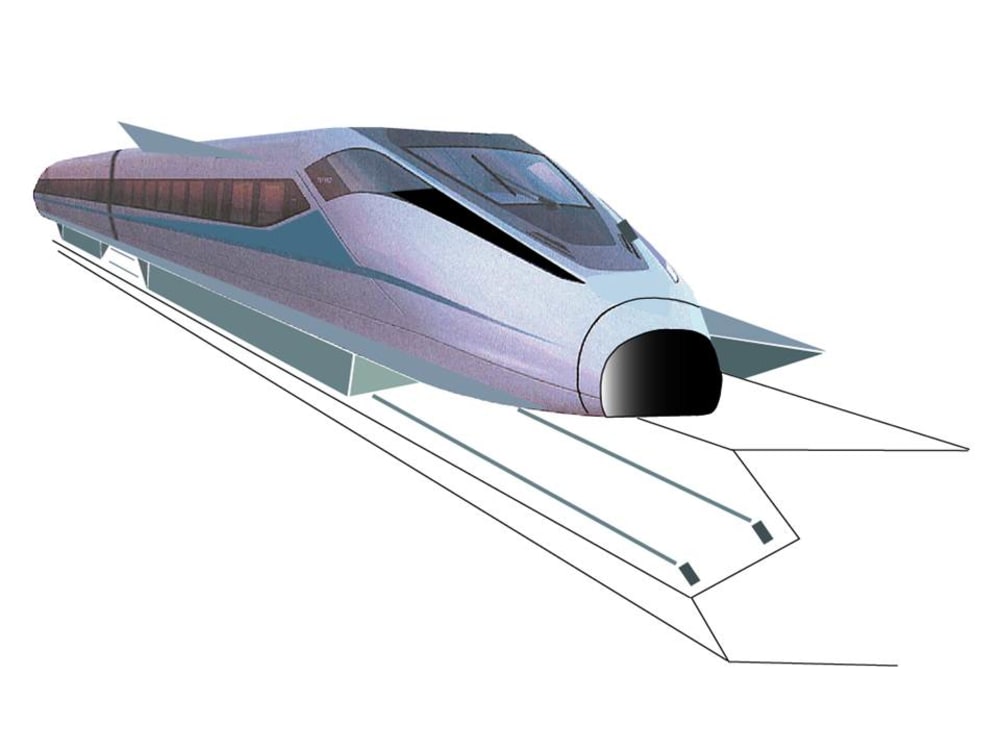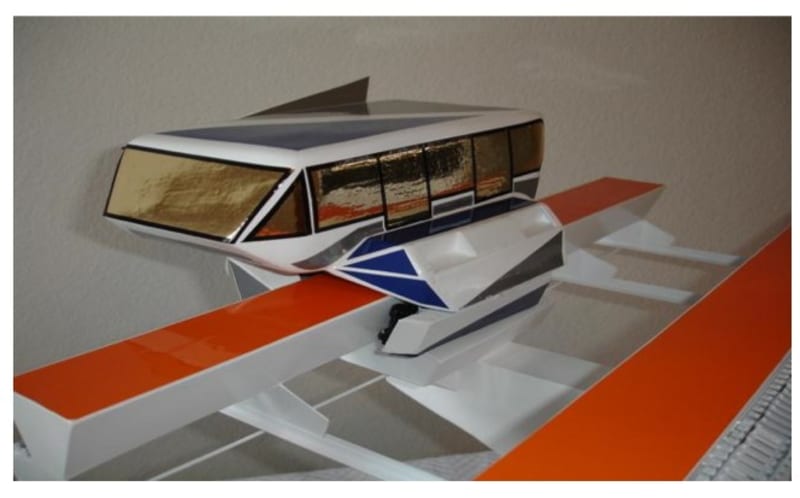“Is 150 Year Old Technology the Best Design for the Next 100 years of High Speed Rail (HSR)?”
For over 150 years, one structural rail technology has been used to transport both (1) bulk items such as coal, grains, chemicals, and containerized cargo; and (2) people. Today, this technology is asked to propel people over 150 mph and use the same “rectangle support structure.” The conventional structure uses only a narrow, 4’ 8 ½” railroad gauge and locates the vehicle’s Center of Gravity (CG) in-between its narrow wheel base. This very restrictive “box design” produces the traditional, narrow, 9’– 9½’ cabin.
Technology - Respectfully, FasTran leaders believe there is better technology to transport passengers at speeds from 150 to 225 mph. FasTran’s design:
1. Triangle Support Structure replaces Conventional Rectangle Support.
2. Vehicle Center of Gravity (CG) is optimized with angles derived from Main Support Wheel and Balance Wheel Assembly’s surfaces. CG is located outside wheel points of contact with guideway surfaces. (Added benefit, Super Wide Cabin – 21’.)
3. Guideways are constructed in a controlled environment to shape and smooth.
Safety - FasTran technology provides unparalleled HSR passenger safety advantage:
1. Vehicle is geometrically impossible to derail from guideway. The FTI design is engineered so that if there were a derailing and before vehicle crash, the guideway (a) will maintain the vehicle upright and (b) confine it within its “railway bed”. Without these two criteria met, unwarranted “conventional” HSR deaths and injuries are a certainty.
2. If FasTran passengers are required to egress from a disabled vehicle, passengers will egress to a protected walkway.
3. All HSR Vehicles are totally grade separated. Plus, one and only one vehicle type will operate in only one direction on the guideway.
Cost - Compare FasTran’s dedicated, aerial guideways, T-columns and ROW cost advantage:
1. requires only a 5’ by 10’ plot of land every 100’ HSR right-of-way. This right-of-way can be on the side or in the middle of a highway or railroad, with the vehicle cantilevered into the “free air space” above the road or railway. With public ROW obtained, FasTran’s HSR right-of-way costs can be obtained at near zero land costs.
2. modularly constructed guideways off construction site are trucked down freeways during low drive times.
3. vehicles over twice the width of conventional HSR cabins, therefore, a FasTran “train” can be ½ length of a conventional HSR’s length and still carry the same number of passengers – in addition, terminal length can also ½ conventional terminal’s length.
4. lower maintenance on rails, attached to guideways, which are located on T-support columns, with T-columns foundations drilled into bedrock. This greatly limits any surface land shifting.
5. design encapsulates wheel-rail-motor sounds - quiet for nearby residents without costly walls.
Research – FasTran’s technology received (1) a NASA grant; City College of New York (CCNY) proved FasTran’s viability. (2) The University of Texas at Arlington (UTA) conducted successful CAD and stress analysis on the vehicle. UTA has scheduled wind tunnel testing.
Like this entry?
-
About the Entrant
- Name:Ennis Sullivan
- Type of entry:individual
- Software used for this entry:SolidWorks, Adobe Illustrator
- Patent status:patented








